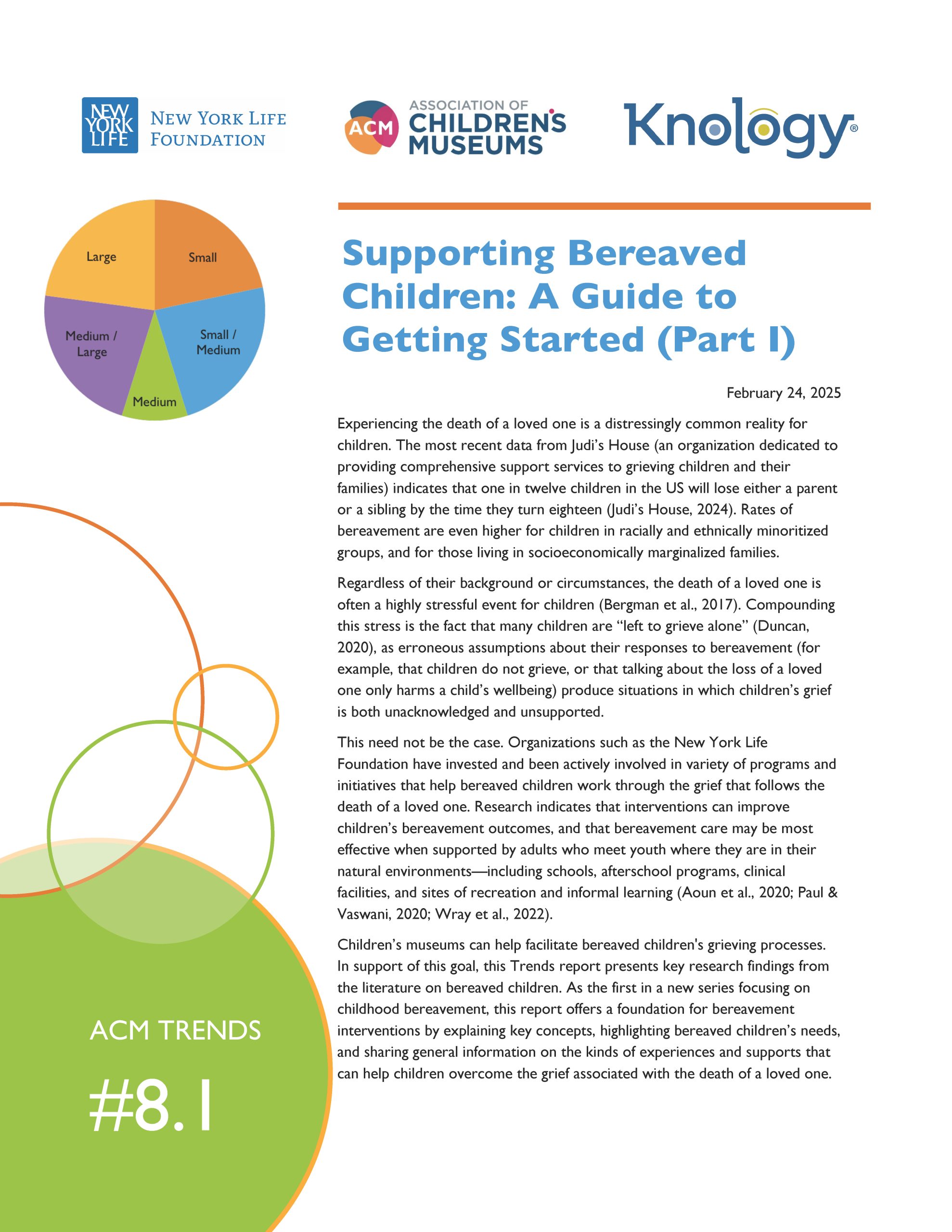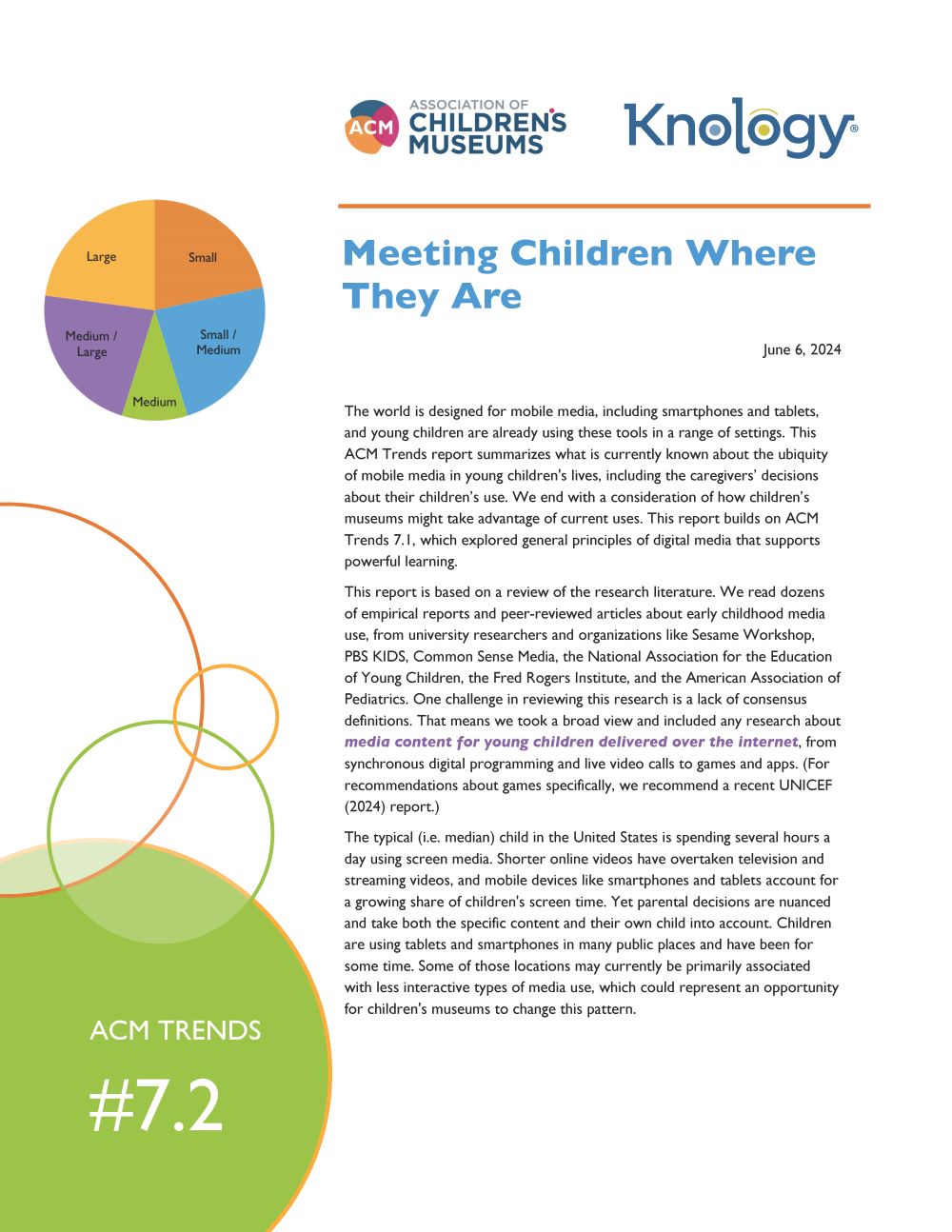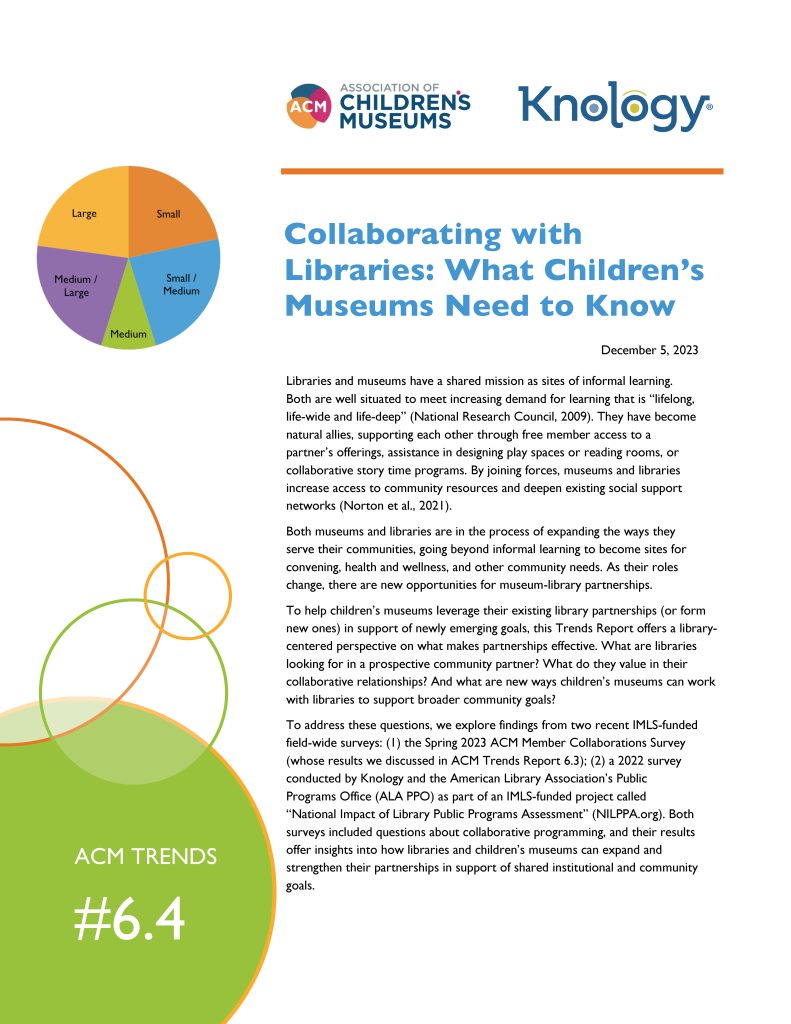
Data from this report was collected through a search of available literature. The research was supported by funding from the New York Life Foundation.
Experiencing the death of a loved one is a distressingly common reality for children. The most recent data from Judi’s House (an organization dedicated to providing comprehensive support services to grieving children and their families) indicates that one in twelve children in the US will lose either a parent or a sibling by the time they turn eighteen (Judi’s House, 2024). Rates of bereavement are even higher for children in racially and ethnically minoritized groups, and for those living in socioeconomically marginalized families.
Children’s museums can help facilitate bereaved children’s grieving processes. In support of this goal, this Trends report presents key research findings from the literature on bereaved children. As the first in a new series focusing on childhood bereavement, this report offers a foundation for bereavement interventions by explaining key concepts, highlighting bereaved children’s needs, and sharing general information on the kinds of experiences and supports that can help children overcome the grief associated with the death of a loved one

Data for this report was collected through a search of available literature. This research was supported by the Institute for Museum and Library Services.
The world is designed for mobile media, including smartphones and tablets, and young children are already using these tools in a range of settings. This ACM Trends report summarizes what is currently known about the ubiquity of mobile media in young children’s lives, including the caregivers’ decisions about their children’s use. We end with a consideration of how children’s museums might take advantage of current uses. This report builds on ACM Trends 7.1, which explored general principles of digital media that supports powerful learning.
This report is based on a review of the research literature. We read dozens of empirical reports and peer-reviewed articles about early childhood media use, from university researchers and organizations like Sesame Workshop, PBS KIDS, Common Sense Media, the National Association for the Education of Young Children, the Fred Rogers Institute, and the American Association of Pediatrics. One challenge in reviewing this research is a lack of consensus definitions. That means we took a broad view and included any research about media content for young children delivered over the internet, from synchronous digital programming and live video calls to games and apps.

Data for this report was collected through a review of existing literature. This research was supported by the Institute for Museum and Library Services.
When designed well, virtual programming and online experiences can facilitate meaningful learning moments in early childhood.
This ACM Trends report focuses on these digital media as one educational tool in the museum toolkit. Several well-regarded early childhood organizations have endorsed particular uses of media even for very young children, and we explore the principles and the research behind them before turning to criteria that can help identify when media is the right tool. ACM Trends 7.2 will build on this report by looking at empirical questions that must inform design: how often children use media, which children use media, and where children use media.
This Trends report reviews the research findings and concludes with practical advice for children’s museums seeking to design meaningful digital media experiences for young children.

Data for this report comes from two surveys. That pertaining to children’s museums’ collaborations with libraries was collected through the Spring 2023 ACM Member Collaborations survey. The dataset contains information from 59 member institutions. Data on library collaborations with museums was collected through a NILPPA survey of US libraries conducted in 2022. This dataset contains information from 314 libraries. Research for both of these projects is supported by the Institute for Museum and Library Services (Grant #s: MG-251839-
OMS-22; MG-80-19-0042-19; LG-250153-OLS-21).
Libraries and museums have a shared mission as sites of informal learning.
Both museums and libraries are in the process of expanding the ways they serve their communities, going beyond informal learning to become sites for convening, health and wellness, and other community needs. As their roles change, there are new opportunities for museum-library partnerships. To help children’s museums leverage their existing library partnerships (or form new ones) in support of newly emerging goals, this Trends Report offers a library centered perspective on what makes partnerships effective. What are libraries looking for in a prospective community partner? What do they value in their collaborative relationships? And what are new ways children’s museums can work with libraries to support broader community goals?
The survey also offered insights into the goals children’s museums are pursuing through collaboration. Though varying considerably, museums’ collaborative goals are connected to three broadly shared aims: (1) healing; (2) learning; (3) community. In what follows, we discuss how these findings can help children’s museums understand, approach, and evaluate collaborative work. Our hope is that sharing this information will not only stimulate dialogue around collaboration and partnership, but also help children’s museum leaders plan new collaborative programs and begin the process of building relationships with new partners.
To address these questions, we explore findings from two recent IMLS-funded field-wide surveys: (1) the Spring 2023 ACM Member Collaborations Survey (whose results we discussed in ACM Trends Report 6.3); (2) a 2022 survey conducted by Knology and the American Library Association’s Public Programs Office (ALA PPO) as part of an IMLS-funded project called “National Impact of Library Public Programs Assessment” (NILPPA.org). Both surveys included questions about collaborative programming, and their results offer insights into how libraries and children’s museums can expand and strengthen their partnerships in support of shared institutional and community goals.